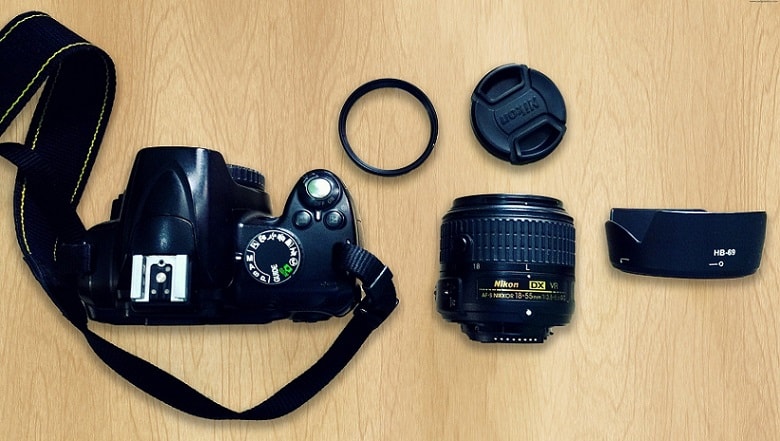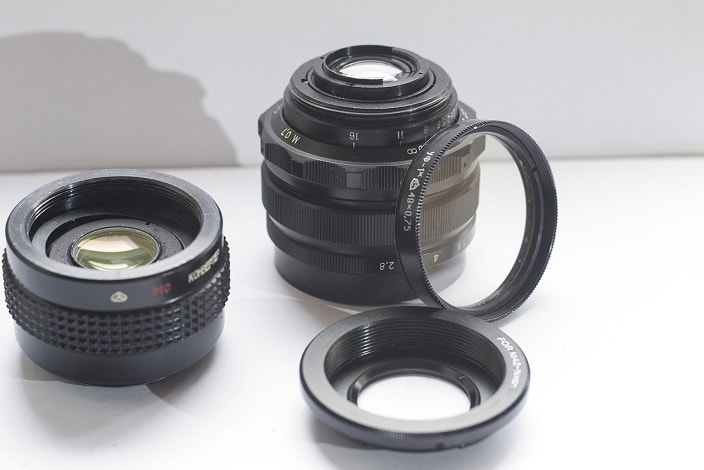Camera filters greatly improve the color, contrast, intensity and even the sharpness of a picture, but why should you use camera lens filters especially with digital cameras when you can use photo enhancing software such as Photoshop or Paintshop Pro to correct any imperfections. Well this may be true for filters such as warming or cooling as the light temperature can be compensated either within the digital camera’s white balance settings or by using digital photo editing software as mentioned earlier. However some lens filters such as the Polarizer can be far more effective than their software equivalents as they improve the quality of the image at source rather than after the event. So let’s take a look at the different types of camera lens filters, what they do and how they work.
Contents

Polarizers remove glare from the objects such as water, glass and any shiny reflective surfaces, as well as darkening an otherwise washed out blue sky and saturating colors to give an overall richer image. The polarizer lens filter consists of two rings both containing polarized sheets.
One of the rings screws onto the threaded end of the camera lens, the diameter of the lens varies so it is important to check the diameter of the threaded part of your lens before purchasing a circular polarizer, while the other part rotates and you can see the effect of the polarizer as you slowly turn it. The reflections you see from, for example, water are what is known as polarized light, which will consist of various wavelengths traveling in a particular orientation such as vertical or horizontal. By rotating the adjustable ring of your circular polarizing lens these wavelengths are blocked or reduced depending on how you position the second filter therefore eliminating or reducing the glare.

There are variations of these filters such as Gold-n-Blue and Blue-Yellow which as the names imply add those color tinges to the image. Be careful though when using these with digital cameras as the Auto-White balance function will not be able to work with those filters fitted. Set the white balance first, then add the filter for optimum effect.
These filters, being neutral grey, reduce the amount of light entering the camera lens and in terms of density range from one to eight stops. The reason why you might want to reduce the light is so you can have longer exposure times to create motion blur effects such as the soft velvety effect of a waterfall or the streak effect of a speeding race car.
The primary purpose of these filters is to reduce UV light from entering the camera lens. Without this filter fitted and in particular on sunny and very bright days, the UV light will produce an overall hazy washed out image. As UltraViolet filters only have a very minimal loss effect on the wanted light they are often left permanently on the camera lens as a means of protection as they cost very little in comparison to the lens itself.
As the name suggests these produce varying degrees of light reduction where for instance you may want to darken the sky a little while having a brighter landscape. These are not so widely used especially with digital photography these days as photo editing software can perform this effect with a greater degree of accuracy.
This video summarizes the previous one and goes more into detail on camera filters including graduation, color grads such as sunset filters, as well as color filters used in black and white photography.
These are used to deliberately alter the white balance of the image. On film cameras they would also be used to compensate for poor quality light such as indoors where yellow tungsten lamps were used. But nowadays they are less popular as the photo software mentioned at the beginning of this article can create or compensate for white balance effects.
For all cameras it is well worth purchasing circular polarizing, Neutral Density and UV filters. Other filters such as the Gradation and White Balance are better suited to film cameras.
There are two main types of filter. Screw on where the filter is screwed directly onto the camera’s lens, the advantage of this method is a nice ‘air tight’ fit between camera lens and filter, or the front “slide-in” variety. An adapter may be required to match your lens diameter to the filter holder, but once the holder is attached, it’s just a question of sliding your chosen filter into the holder. These holders can take up to three filters, so interesting combinations can be achieved, but be careful not to loose too much incoming light which would ruin the overall effect.
If you are looking to attain further knowledge in digital photography then a great place to visit is Cambridge in colour.com where there are many tutorials on many aspects of photography.
Further information on camera lens filters can be found at Wikipedia, as well as Photonotes.org.
Well, as with all things in life you get what you pay for. In other words if you are into serious photography then you’re best sticking to top filter manufacturers such as Hoya, Nikon, B&W, and Heliopan. In some cases you can actually see the difference just by looking through the filter itself let alone through the camera. However good results can still be achieved from less expensive manufacturers.
 |
 |
 |
 |
Check These Out